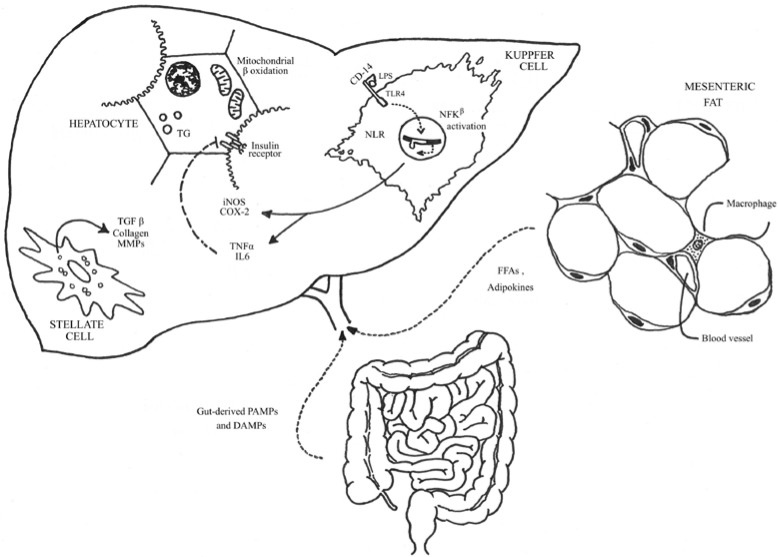Figure 1.
Alterations in gut microbiota increase intestinal permeability favoring the absorption of pathogen-associated molecular patterns, such as lipopolysaccharide (LPS). This phenomenon activates the TRL4 receptors that increase the NF-κB-related gene transcription in the Kupffer cells triggering inflammatory pathways by the activation of proinflammatory genes, such as TNF-α, IL-6, IL-8, and IL-12 genes, and by generating reactive oxygen species (ROS). The consequent inflammatory response induces production of profibrotic factors by the hepatic stellate cells; impairs insulin signaling with a subsequent increase in FFAs afflux; and alters mitochondrial beta-oxidation, which results in hepatic steatosis and inflammation. PAMPs: pathogen-associated molecular patterns; DAMPs: damage associated molecular patterns; TGF-β: transforming growth factor-β; MMPs: metalloproteinases; LPS: lipopolysaccharide; NF-κB, nuclear factor-κB; TLR, toll-like receptor; ROS, reactive oxygen species; iNOS, inducible nitric oxide synthase; TNF-α: tumor necrosis factor-α; IL-6: interleukin-6; COX-2: cyclooxygenase-2; TG: triglycerides; FFAs, free fatty acids (Adapted from Meli R, Raso GM, Calignano A. Role of innate immune response in non-alcoholic Fatty liver disease: metabolic complications and therapeutic tools [41].)

